#Serbian History
Explore tagged Tumblr posts
Text
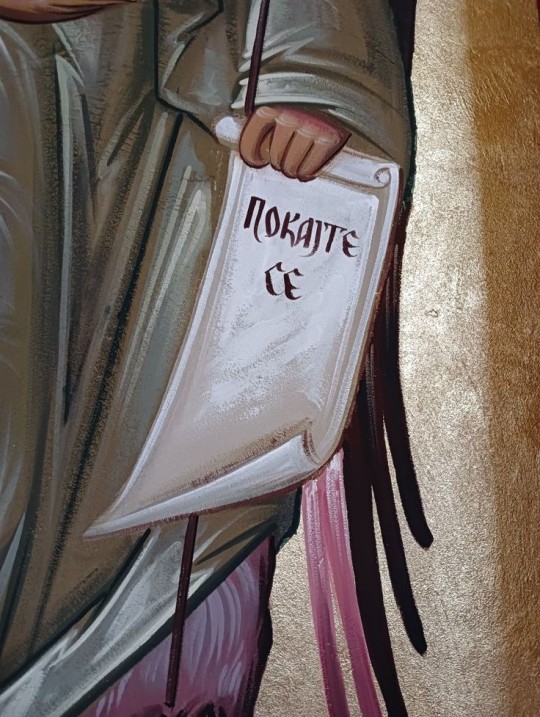
"Repent" written on an icon in a Serbian Orthodox church
#orthodoxy#orthodox#orthodox christianity#christianity#eastern orthodoxy#church#orthodox church#eastern orthodox#orthodox christian#eastern orthodox christian#serbian orthodox#serbian culture#serbian history#monastery#monasticism#churches#go to church
110 notes
·
View notes
Text
Milunka Savić, the Most Decorated Female Combatant in History: Savić disguised herself as a man in order to join the Serbian army during the Balkan Wars, then served again during WWI, earning medals from Serbia, France, Russia & Britain; she also provided medical support to anti-fascists during WWII and spent 10 months in a Nazi concentration camp
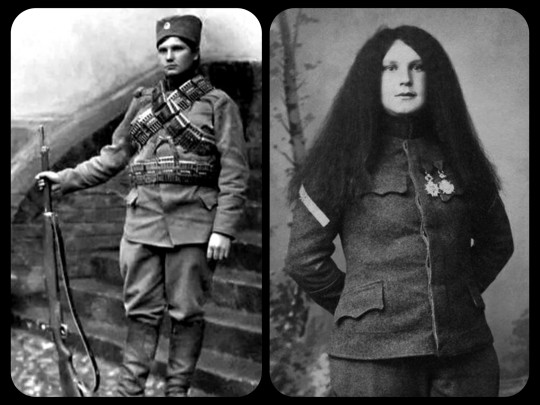
This is a total rewrite of a post that I did last year, with much more detailed information, more photos, and some additional sources.
Milunka Savić is regarded as the most decorated female combatant in history. She fought for the Serbian Army during both of the Balkan Wars, before returning to the battlefield again during WWI. Savić was wounded in battle on 9 separate occasions and survived the Serbian Great Retreat, making the perilous journey across the mountains of Montenegro and Albania through the dead of winter with a serious head injury.
Her military career began during the First Balkan War in 1912, when her younger brother was called up to serve in the Serbian army, and she decided that she would covertly take his place. She cut her hair, wore men's clothing, and presented herself as her brother.

The First Balkan War, 1912: Milunka Savić as a young soldier during the First Balkan War, shortly after joining the Serbian army
She was able to hide her true identity for quite some time. Her skills as a soldier quickly became evident as the war progressed, and she earned her first medal/promotion during the Battle of Bregalnica in 1913. Unfortunately, she was hit by shrapnel from a Bulgarian grenade during her tenth deployment, causing injuries to her chest and abdomen, and those wounds (along with the subsequent medical treatment) ultimately led to the discovery that she had lied about her identity.
In recognition of her accomplishments on the battlefield, her commanding officer decided not to punish her for the initial deception, but informed her that she would not be allowed to return to combat -- as a woman, she could only be transferred to the nursing division instead.
As the story goes:
Savić was called before her commanding officer. They didn't want to punish her, because she had proven a valuable and highly competent soldier, and the military deployment that had resulted in her [sex] being revealed had been her tenth; but neither was it suitable for a young woman to serve in combat. She was offered a transfer to the Nursing division. Savić stood at attention and insisted that she only wanted to fight for her country as a combatant.
The officer said he'd think it over and give her his answer the next day. Still standing at attention, Savić responded, "I will wait." It is said he only made her stand an hour before agreeing to send her back to the infantry.
Savić was able to serve in a combat role throughout the remainder of the Balkan Wars.
The Second Balkan War finally came to an end in 1913, but that peace was short-lived, as World War I erupted just a year later. Savić returned to the military once more, serving in the elite "Iron Regiment" of the Serbian army.
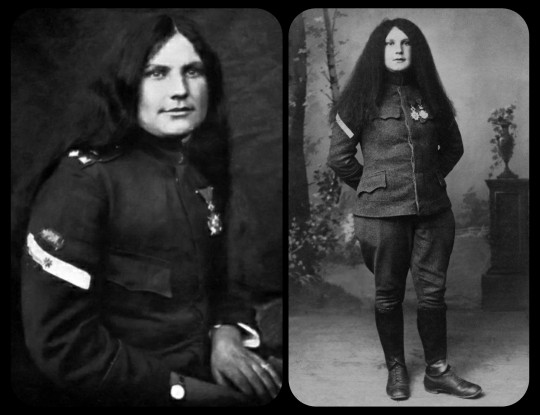
World War I, c.1915-1916: Savić was no longer forced to hide her identity when she returned to battle during WWI, and these images show her posing in uniform with her hair grown out
Savić received the Serbian Karađorđe Star with Swords medal on two separate occasions during WWI; the second medal was given to her after the Battle of Crna Bend in 1916, where she was credited with single-handedly capturing 23 Bulgarian soldiers. She received several other medals throughout the course of her career, including the French Legion of Honor (twice), the French Croix de Guerre, the Russian Cross of St. George, the British Medal of the Most Distinguished Order of St. Michael, and the Serbian Miloš Obilić.
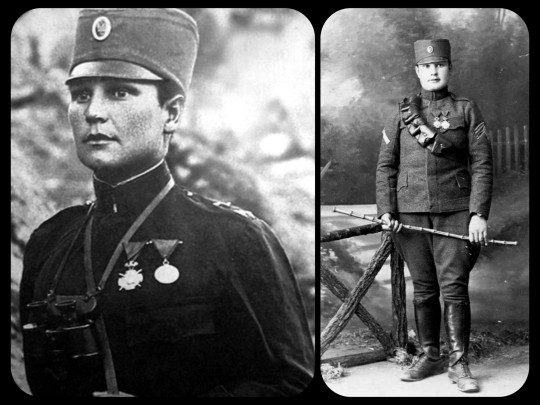
WWI, c.1915-1916: Milunka Savić as a Corporal in the Iron Regiment
She suffered a serious head injury while fighting along the Macedonian front, and she was still gravely wounded when Austro-Hungarian, German, and Bulgarian forces gained control of Serbia in the winter of 1915. The Serbian army was then ordered to make a full retreat from Serbia; Savić and her fellow soldiers, along with the Serbian government and more than 200,000 civilians, were all forced to flee through the mountains of Montenegro and Albania in the dead of winter, hoping to reach Allied forces along the Adriatic Coast -- a perilous journey that would later be known as the Serbian Great Retreat (or the Albanian Golgotha). Roughly 400,000 people embarked on this journey, and less than 180,000 of them survived, eventually reaching the Allied ships along the Adriatic coast.
Despite her injuries, Milunka Savić was among the survivors. She was sent to an infirmary, where she spent several months recovering from her injuries, before she returned to the battlefield alongside Allied forces.
At the end of the war, the French government offered to provide Savić with a full pension and living accommodations in France, in recognition of her actions while serving alongside the French military during WWI. She ultimately declined the offer and chose to retire back in Serbia instead, where she and her husband settled down to raise their daughter and three other girls that Milunka had adopted. The couple would later separate, however, and Milunka was left to raise her children as a single mother, working at a local bank to make ends meet.
In 1941, Serbia (which was then part of Yugoslavia) fell under Nazi occupation. During this period, Savić was involved in providing medical support to local partisans and anti-fascists who had resisted the Nazi occupation. She was eventually arrested by German officers; there are differing accounts of the events leading up to her arrest, with some sources suggesting that she was arrested as a result of her involvement with the local partisans and other anti-fascist elements, while other sources claim that she was arrested after she offended several Nazi officials by openly refusing to attend a formal banquet that was being held in honor of the German military campaign. In any case, she was imprisoned at the infamous Baljinca Concentration Camp for ten months before finally being released.
She faced other forms of hardship in the aftermath of WWII, as she struggled to support herself and her children. She worked several low-paying jobs over the years, while living in a dilapidated, decaying house in Belgrade. Her name (and her long list of accomplishments) had largely faded into obscurity by then.
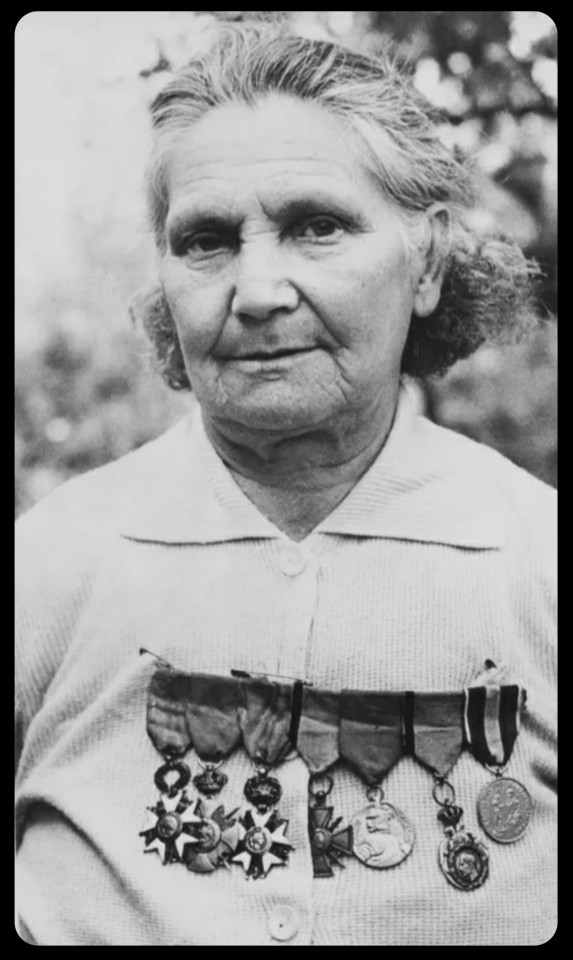
Serbia, 1972: Milunka Savić proudly displaying some of her medals in 1972, when her story became more widely known
It wasn't until the early 1970s that her involvement with the military finally began to receive more widespread attention, both in Serbia and abroad. Following the 1972 publication of an article that told her story, her local community in Belgrade quickly rallied to provide her with newer, more suitable living arrangements.
Sadly, she passed away within just a year of the article's publication.
In 2013, Milunka Savić's remains were relocated from the small mausoleum where they had been interred since 1973, and she was reburied in Belgrade's "Alley of the Greats," where some of the most well-known and most widely respected Serbians are laid to rest.
Sources & More Info:
Research Gate: Milunka Savić: the Forgotten Heroine of Serbia
Girl Museum: Milunka Savić
Law and Politics: The Position of Women in the Serbian Army
Medium: The Fearless Woman-Bomber Who Died Proud, Broke, and Forgotten
Wikipedia: Milunka Savić
Mental Floss: The Serbian "Great Retreat" Begins (WWI Centennial)
#history#Milunka Savić#women in history#serbia#women in the military#balkans#military history#wwii#wwi#yugoslavia#milunka savic#challenging gender norms#feminism#femininity#serbian history#women's liberation#women in war#real-life mulan
170 notes
·
View notes
Text
👑 Serbian Bride from Gerzovo, 1890 🇷🇸

▪️This stunning photograph captures a Serbian bride from the village of Gerzovo, near Mrkonjić Grad, in what is today Serbs Republic in Bosnia & Herzegovina. Taken in the late 19th century, it showcases the richness of Serbian tradition, the craftsmanship of folk attire, and the deep symbolism behind wedding customs.
▪️ Her attire is a true masterpiece – the chest piece adorned with coins symbolizes prosperity and protection, while the elaborate headpiece signifies status and the importance of the occasion. Every element of her outfit, from intricate embroidery to tassels and decorative details, reflects the refined artistry of Serbian folk heritage.
▪️Serbian wedding traditions were full of symbolism – from songs and rituals to clothing and gifts, everything had meaning. These traditional garments were not only visually stunning but also a testament to identity and heritage, passed down through generations.
🔥 Let’s cherish our heritage and share the stories that honor the strength and beauty of our ancestors!
#serbian#balkan#europe#serbian beauty#serbian traditional clothes#serbian folklor#slavic#serbian women#serbian tradition#serbian culture#🇷🇸#Mrkonjić#Gerzovo#Vintage#vintage serbia#Serbian Bride#History#Serbian history
41 notes
·
View notes
Text

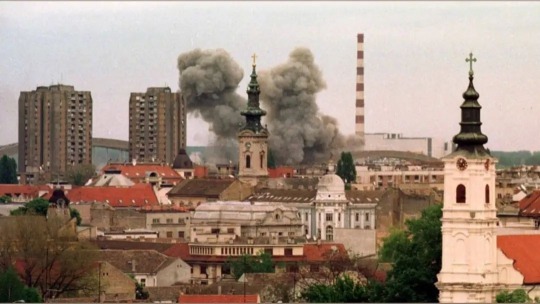
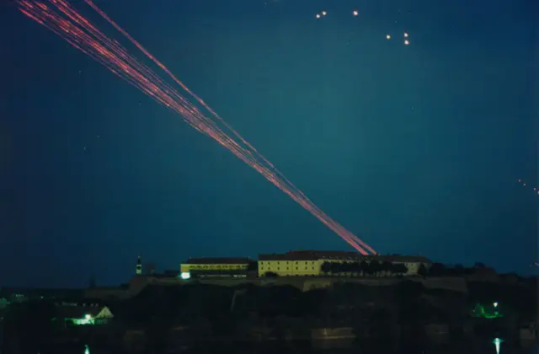
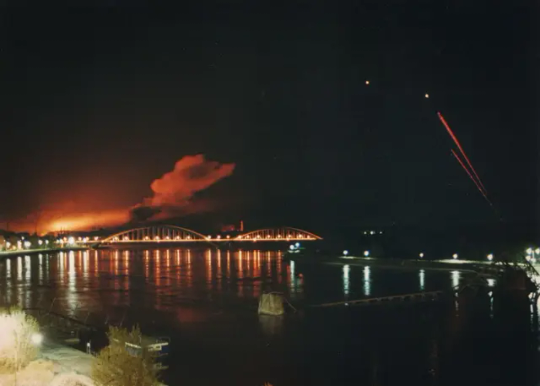
26 years have passed but we shall not forget your crimes
pictures taken during the NATO bombing of Novi Sad, Serbia (then FRY) in 1999.
#serbia#serbian history#nato agression#nato is a terrorist organisation#nato is a criminal organisation#america is a terrorist state#yugoslavia
32 notes
·
View notes
Text
VERA KURTIĆ // ACTIVIST
"She is a Romani feminist activist and writer from Serbia, She is the author of the book Diuvljarke: Roma Lesbian Existence, which is the first book to discuss non-heteronormative Roma women's sexuality. Her activism includes campaigning for the Roma community, LGBTQI rights, women's rights and animal rights; some of this work also includes gender awareness training and veganism. She founded the Roma Women's Network of Serbia and instigated more informal LGBT Roma community organisation. She also established the Campaign Month of Roma Women Activism. She is author of the book Duvljarke: Roma Lesbian Existence (2013) which discusses the discrimination that Roma lesbians face. It is the first book to discuss non-heteronormative Roman women's sexuality."
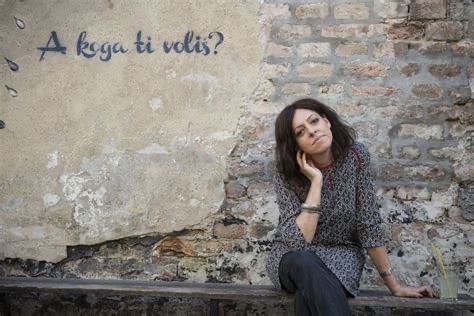
76 notes
·
View notes
Text

A Scene from the Balkan War (1914)
Balkan Wars, (1912–13), two successive military conflicts that deprived the Ottoman Empire of all its remaining territory in Europe except part of Thrace and the city of Adrianople (Edirne). The second conflict erupted when the Balkan allies Serbia, Greece, and Bulgaria quarreled over the partitioning of their conquests. The result was a resumption of hostilities in 1913 between Bulgaria on the one hand and Serbia and Greece, which were joined by Romania, on the other.
By Jaroslav Věšín (Czech, 1860 - 1915)
#first Balkan war#history#military art#military#1900s#early 1900s#soldier#the Balkans#Bulgarian history#Serbian history#Greek history#Turkish history#Ottoman Empire#Romanian history#pre-WW1
19 notes
·
View notes
Text

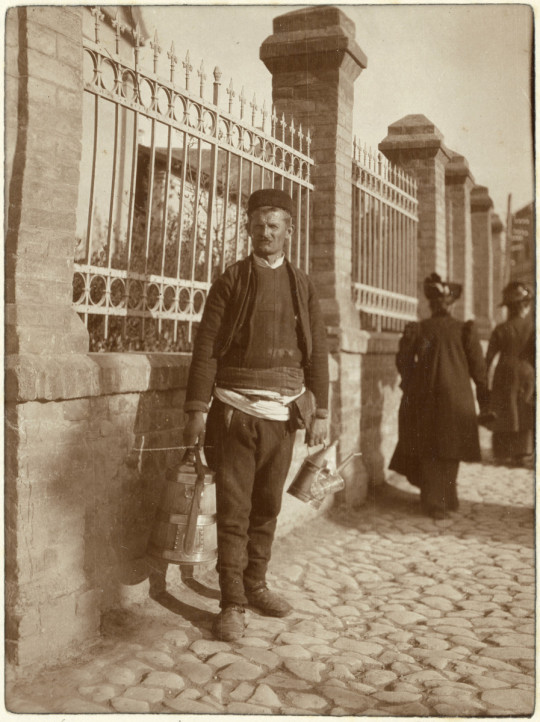
(1) 'Servian [Serbian] maisypop' (handwritten caption).
(2) 'Boza (maize drink) vendor/ Belgrade' (handwritten caption).
April 1910. Belgrade, Serbia.
Prints from the collection of Nevill Forbes. Pitt Rivers Museum.
#eastern europe#serbia#food#menswear#sort of?#serbian history#cuisine#early 20th century#1910s#boza appreciation society
4 notes
·
View notes
Text
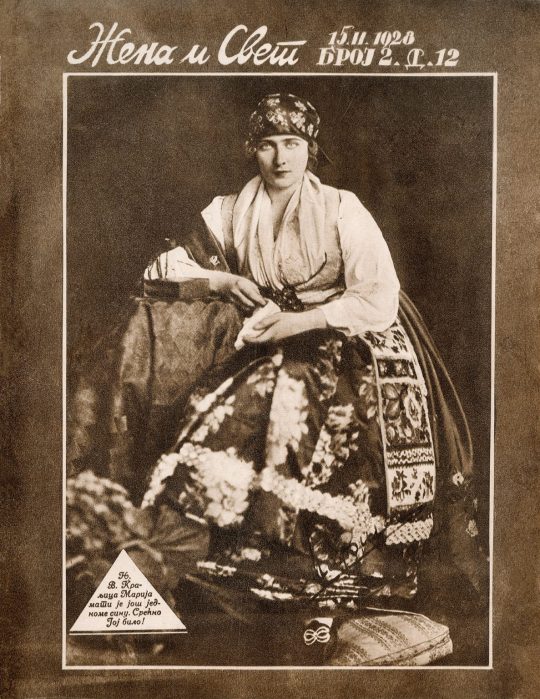
Краљица Марија на насловној страни часописа „Жена и свет“ из фебруара 1928.
#marija karađorđević#serbian history#serbian royal family#mignon#maria of yugoslavia#queen maria of yugoslavia
4 notes
·
View notes
Video
youtube
Veljko Lalić: Peti oktobar je bio revolucija
1 note
·
View note
Text
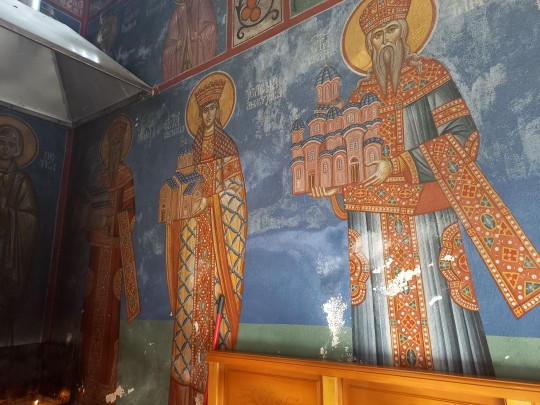



Monastery Hercegovačka Gračanoca in Trebinje, Republic of Srpska, Bosnia and Herzegovina. The last picture is where the famous serbian poet, Jovan Dučić, who was also born in Trebinje, was burried in 1943.
#orthodox#orthodox christianity#orthodoxy#christianity#eastern orthodoxy#orthodox church#eastern orthodox#church#orthodox christian#serbian folk#serbian man#serbian history#serbian#historical#history#serbia
123 notes
·
View notes
Text
Hey everyone
Anyone here with some knowledge of Serbian History and/or medals that were awarded in the nineteenth century?
My great-great-great-something grandfather received a medal, but we can’t find anything about why he should’ve received it or why he would’ve been there at all. I can’t find where I should be looking — I also don’t speak Serbian, which makes it more difficult.
Anyone have any clue where to look?
0 notes
Text

▪️A Serbian lady dressed in serbian traditional city clothes 🇷🇸
▪️Mina Karadzitsh(srb. Мина Караџић/lat. Mina Karadžić) Serbian painter and writer
▪️Time: 1847
Author: Deker Gabriel
#serbian#balkan#europe#serbian beauty#serbian traditional clothes#serbian folklor#slavic#serbian women#serbian tradition#serbian culture#Serbian girl#Serbian history#Serbian painter#Serbian female#Serbs#serbian aesthetics#Culture#19th century serbia#19th century
79 notes
·
View notes
Text

Христос Васкрсе браћо и сестре!
Christ is Risen! Христос воскрес! Χριστὸς ἀνέστη!
олтар Саборне Цркве Светог великомученика Георгија у Новом Саду ⏐ altar of The Cathedral Church of the Holy Great-Martyr George
#serbia#orthodox#orthodox christianity#easter#serbian art#serbian history#christianity#christian iconography#church#orthodox church
16 notes
·
View notes
Text
VESNA VULOVIĆ // FLIGHT ATTENDANT
“She was a Serbian flight attendant who survived the highest fall without a parachute: 10.16 kilometres (6.31 miles) or 33,333 feet. She was the sole survivor of JAT Flight 367 after an explosion tore through the baggage compartment on 26 January 1972, causing it to crash near Srbská Kamenice, Czechoslovakia (now part of the Czech Republic). Air safety investigators attributed the explosion to a briefcase bomb. The Yugoslav authorities suspected that émigré Croatian nationalists were to blame, but no one was ever arrested. Following the bombing, Vulović spent days in a coma and was hospitalized for several months. She suffered a fractured skull, three broken vertebrae, broken legs, broken ribs, and a fractured pelvis. These injuries resulted in her being temporarily paralyzed from the waist down. Vulović made an almost complete recovery but continued to walk with a limp. She had little to no memory of the incident and had no fear of flying in the aftermath of the crash. Despite her willingness to resume work as a flight attendant, Jat Airways (JAT) gave her a desk job negotiating freight contracts, feeling her presence on flights would attract too much publicity. Vulović became a celebrity in Yugoslavia and was deemed a national hero. Vulović was fired from JAT in the early 1990s after taking part in anti-government protests during the breakup of Yugoslavia, but avoided arrest as the government was concerned about the negative publicity that her imprisonment would bring. She continued her work as a pro-democracy activist until the Socialist Party of Serbia was ousted from power during the Bulldozer Revolution of October 2000. Vulović later campaigned on behalf of the Democratic Party, advocating Serbia's entry into the European Union. Her final years were spent in seclusion, and she struggled with survivor guilt. Having divorced, Vulović lived alone in her Belgrade apartment on a small pension until her death in 2016.”


1 note
·
View note
Text
Ah Belgrade my beloved. I miss you with all my heart.


eastern gate of belgrade
29 notes
·
View notes
Text

1837 Anka Topalović, née Nenadović - Katarina Ivanović
Showcasing traditional serbian dress and of course my favorite details in a portrait, flowers.
#art#portrait#female portrait#19th century#1830s#serbian art#female artist#flowers#fashion history#Katarina Ivanović
74 notes
·
View notes